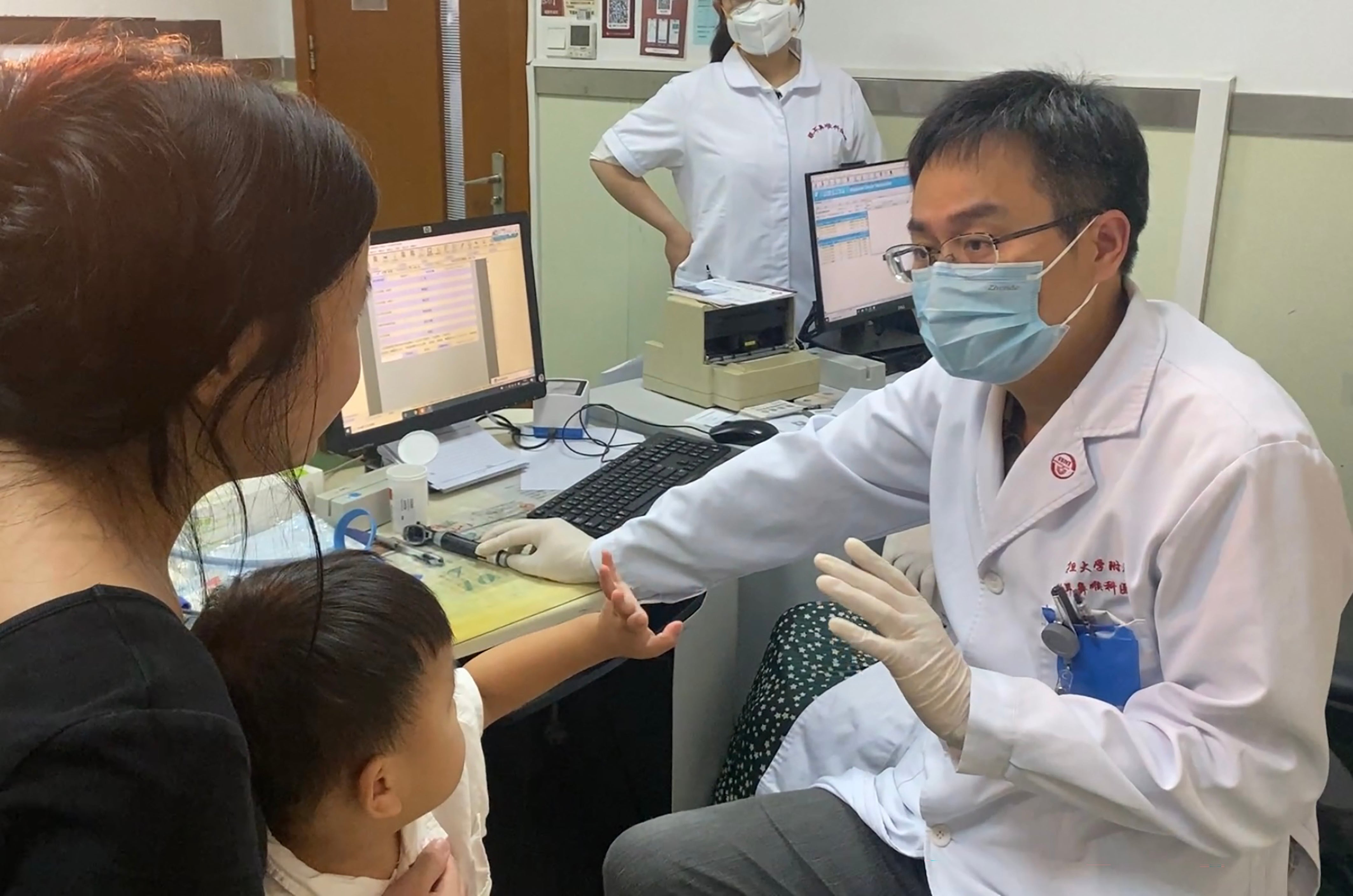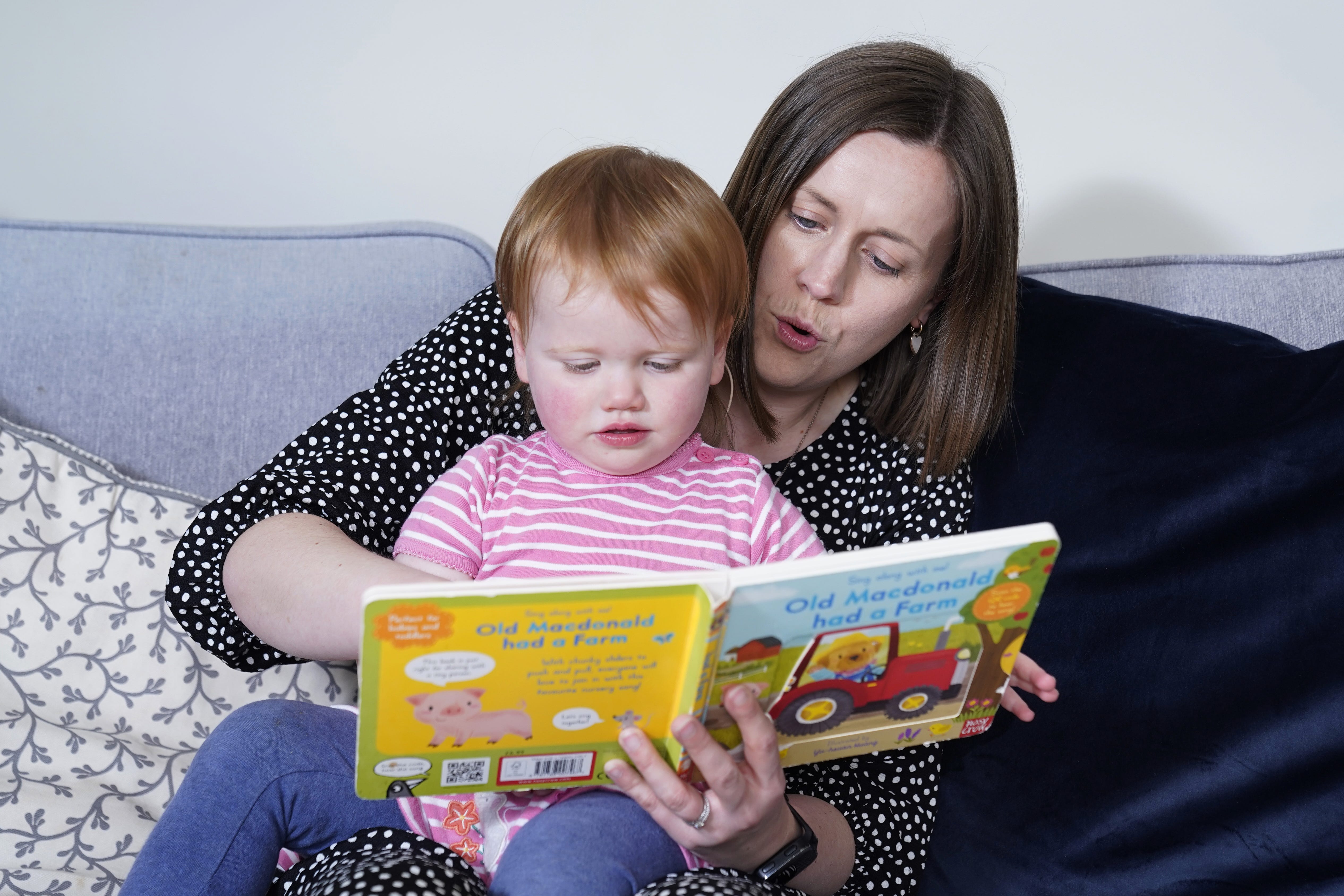Two deaf children can hear in both ears after world-first treatment
After the gene therapy, the children went from being profoundly deaf to having mild to moderate hearing loss

Your support helps us to tell the story
From reproductive rights to climate change to Big Tech, The Independent is on the ground when the story is developing. Whether it's investigating the financials of Elon Musk's pro-Trump PAC or producing our latest documentary, 'The A Word', which shines a light on the American women fighting for reproductive rights, we know how important it is to parse out the facts from the messaging.
At such a critical moment in US history, we need reporters on the ground. Your donation allows us to keep sending journalists to speak to both sides of the story.
The Independent is trusted by Americans across the entire political spectrum. And unlike many other quality news outlets, we choose not to lock Americans out of our reporting and analysis with paywalls. We believe quality journalism should be available to everyone, paid for by those who can afford it.
Your support makes all the difference.Two children who were born deaf can now listen and dance to music after undergoing pioneering gene therapy that restored their hearing.
They are among a small group who were the first in the world to receive ground-breaking treatment.
Given as an infusion into the ear, it works by replacing the faulty DNA which causes a type of inherited deafness known as DFNB9.
Five children, two girls and three boys, gained hearing abilities in both ears, and were able to hear and speak words and locate where a sound was coming from.
But two of them showed more advanced improvements and were able to respond to music, which has more complex sound signals, the researchers said.
Zheng-Yi Chen, an associate scientist in the Eaton-Peabody Laboratories at Mass Eye and Ear in the US, said: “The results from these studies are astounding.
“We continue to see the hearing ability of treated children dramatically progress and the new study shows added benefits of the gene therapy when administrated to both ears, including the ability for sound source localisation and improvements in speech recognition in noisy environments.”
They said treating children in both ears gives them the ability to hear sound in three dimensions, which is important for communication and common daily tasks such as driving.
The researchers said their work, published in the journal Nature Medicine, shows this type of treatment “holds great promise and warrants larger international trials”.
While this experimental therapy targets only one condition, the hope is that similar treatments could in future help many more children with other types of deafness caused by genes.
The latest results build on the work the team did two years ago, when they treated children in one ear.

After the gene therapy, the children went from being profoundly deaf to having mild to moderate hearing loss in the treated ear.
But administering the therapy in both ears reaped additional benefits compared with the previous trial, the team said, including being able to hear in noisy environments.
DFNB9 is one of the most common forms of hereditary deafness.
There are thought to be 20,000 people in Europe and the US with the condition.
It is caused by a failure to produce a protein known as otoferlin, which is necessary for the transmission of the sound signals from the ear to the brain.
Currently, cochlear implant is the only effective treatment recommended to DFNB9 patients.
To deliver the treatment, the researchers used a modified version of the adeno-associated virus (AAV), which is not harmful to humans.
AAV was tweaked by the scientists so it could carry a version of the human OTOF gene.
The gene treatment was given as an infusion into the inner ears of the patients.
The children were observed for 13 weeks or 26 weeks at the Eye & ENT Hospital of Fudan University in Shanghai, China.
The researchers said that no major side effects were seen and the trial remains ongoing where the patients are continuing to be monitored.
They also added that further work is needed to refine the therapy.
Prof Chen, who is also an associate professor of otolaryngology – head and neck surgery at Harvard Medical School in the US, said: “Our ultimate goal is to help people regain hearing no matter how their hearing loss was caused.
“Our study strongly supports treating children with DFNB9 in both ears, and our hope is this trial can expand and this approach can also be looked at for deafness caused by other genes or non-genetic causes.”
It comes after a girl in the UK also received a similar type of gene therapy in a separate clinical trial at Addenbrooke’s Hospital in Cambridge.

Opal Sandy, 18 months, from Oxfordshire, had the treatment in her right ear under general anaesthetic, and a cochlear implant was put into her left ear.
Just a few weeks later, she could hear loud sounds, such as clapping.
Now six months after treatment, she is able to hear soft sounds, such as a whisper, and is starting say words such as “mama”, “dada” and “uh oh”.
Join our commenting forum
Join thought-provoking conversations, follow other Independent readers and see their replies
Comments